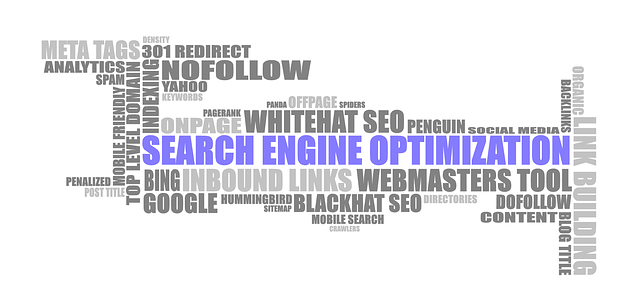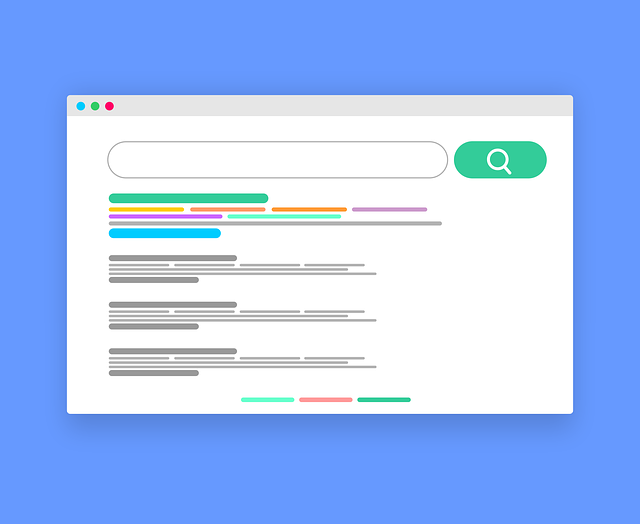A SEO Audit meticulously analyzes individual web pages for best optimization practices, encompassing content quality, relevance, and technical aspects. It involves evaluating title tags, meta descriptions, headings, image alt text, page loading speed, keyword targeting, website structure, responsive design, and error-free URLs. The goal is to drive organic traffic, improve conversions, and enhance search rankings by naturally incorporating keywords while maintaining user engagement and site navigation ease. Using tools like Google Search Console, SEMrush, or Ahrefs, a strategic plan is created post-audit for critical issue prioritization and ongoing optimization success.
Conducting a thorough on-page SEO audit is essential for optimizing your website and enhancing its search engine rankings. This comprehensive guide breaks down the process into manageable sections, from understanding the fundamentals of an SEO audit to implementing post-audit strategies. We’ll explore key elements, content optimization, technical aspects, user experience improvements, and must-have tools. By following these steps, you’ll be well on your way to achieving better search engine visibility and driving more organic traffic to your site.
Understanding On-Page SEO Audit: A Comprehensive Overview

An on-page SEO audit is a meticulous evaluation of individual web pages to ensure they align with best practices for search engine optimization (SEO). It involves analyzing various elements within a page’s content, structure, and code to determine their impact on search rankings. This process goes beyond keyword research and links; it scrutinizes everything from title tags and meta descriptions to heading structures, image alt text, and page loading speed.
A comprehensive on-page SEO audit begins with identifying target keywords relevant to the page’s content. It then assesses how well these keywords are incorporated naturally within the copy. Audit tools help identify technical issues like broken links, duplicate content, or improper use of headings, which can negatively impact a page’s visibility in search results. By addressing these issues and optimizing elements for both users and search engines, businesses can enhance their online presence, drive more organic traffic, and ultimately, improve conversions.
Identifying Key Elements for a Successful Audit

A successful on-page SEO audit requires meticulous identification and evaluation of critical elements that directly impact search engine rankings. The primary focus should be on content quality, relevance, and optimization. This involves scrutinizing keywords, ensuring they are strategically placed in titles, headings, meta descriptions, and throughout the body text. Each web page must have a clear and unique focus keyword, addressing the user’s intent and aligning with relevant search queries.
Additionally, auditing technical aspects is paramount. This includes checking for proper website structure, responsive design, fast loading times, and error-free URLs. Search engine crawlers need to effortlessly navigate and index pages, so ensuring these elements are optimized enhances overall SEO performance.
Analyzing Website Content and Keyword Optimization

An essential part of any comprehensive SEO audit is a thorough analysis of website content and keyword optimization. This involves scrutinizing the quality, relevance, and optimization of text on each page to ensure it aligns with search engine guidelines and effectively communicates the site’s purpose. During this process, SEO professionals evaluate how well the content targets specific keywords, considering their placement, density, and context.
By examining title tags, meta descriptions, header tags (H1-H6), and body text, experts can identify opportunities to enhance keyword visibility and natural language processing. Optimizing content for both search engines and users involves integrating relevant keywords seamlessly throughout the site while maintaining readability and engaging user experience. This balanced approach ensures that the website’s content not only ranks well in search engine results but also keeps visitors engaged and likely to convert.
Evaluating Technical Aspects of Your Site's Performance

When conducting an SEO audit, assessing your site’s technical performance is a crucial step. This involves evaluating various factors that impact how search engines crawl and index your content. It includes checking for proper website structure, ensuring all pages are accessible to crawlers, and verifying that there are no broken links or errors that could hinder the user experience. A well-structured site with minimal issues will not only improve search engine visibility but also ensure a smooth navigation experience for visitors.
Focus on technical SEO as it serves as the foundation for any online success. By fixing technical glitches and implementing best practices, you enable search engines to efficiently process your content, which can significantly boost your website’s ranking in search results. This step is vital, especially for sites with complex architectures or recent design changes, ensuring that they remain optimized for both users and search algorithms.
Enhancing User Experience for Better Search Engine Rankings

When conducting an SEO audit, enhancing user experience (UX) should be a key focus. Search engines like Google prioritize websites that offer a positive UX, including easy navigation, fast loading times, and mobile-friendliness. By improving these aspects, you can not only make your site more enjoyable for visitors but also boost your search engine rankings. A seamless UX encourages users to explore more pages, spend longer on the site, and ultimately reduce bounce rates, all of which are positive signals to search engines.
This strategy involves optimizing various elements such as website structure, content quality, internal linking, and call-to-actions (CTAs). For instance, organizing your site with a logical hierarchy helps users—and search engine crawlers—understand the context and relationships between pages. High-quality, relevant content keeps visitors engaged and encourages sharing, while well-placed CTAs guide users towards desired actions, like subscriptions or purchases. Integrating these UX enhancements into your SEO audit ensures that your website not only ranks higher but also delivers a valuable experience to its audience.
Tools Essential for Conducting an Effective On-Page Audit

Conducting a comprehensive on-page SEO audit is crucial for optimizing your website’s visibility and performance in search engine results. To effectively carry out this task, several essential tools are at your disposal. One popular choice is Google Search Console, which provides valuable insights into how search engines interact with your site. It offers data on indexing, search queries, and any issues that may hinder your website’s performance.
Additionally, SEO audit tools like SEMrush or Ahrefs allow for in-depth analysis of individual web pages. These tools scrutinize meta tags, headings, content quality, and keyword optimization—all vital aspects of a successful SEO strategy. They also identify technical issues such as broken links, site speed problems, and mobile usability concerns, ensuring your website is optimized across all devices and search environments.
Implementing Changes: Post-Audit Strategy for SEO Success

After conducting a comprehensive SEO Audit, it’s crucial to have a strategic plan for implementing changes. The first step is to prioritize issues based on their impact on search rankings and user experience. Focus on high-priority items first, such as fixing critical technical errors or optimizing meta titles and descriptions.
Once the initial priorities are set, create a detailed action plan. Break down each change into manageable tasks, assigning them to relevant team members. Regularly monitor progress and adjust the strategy as needed. Continuous testing and analysis using SEO tools will ensure that changes are effective and align with best practices for optimal SEO success.
